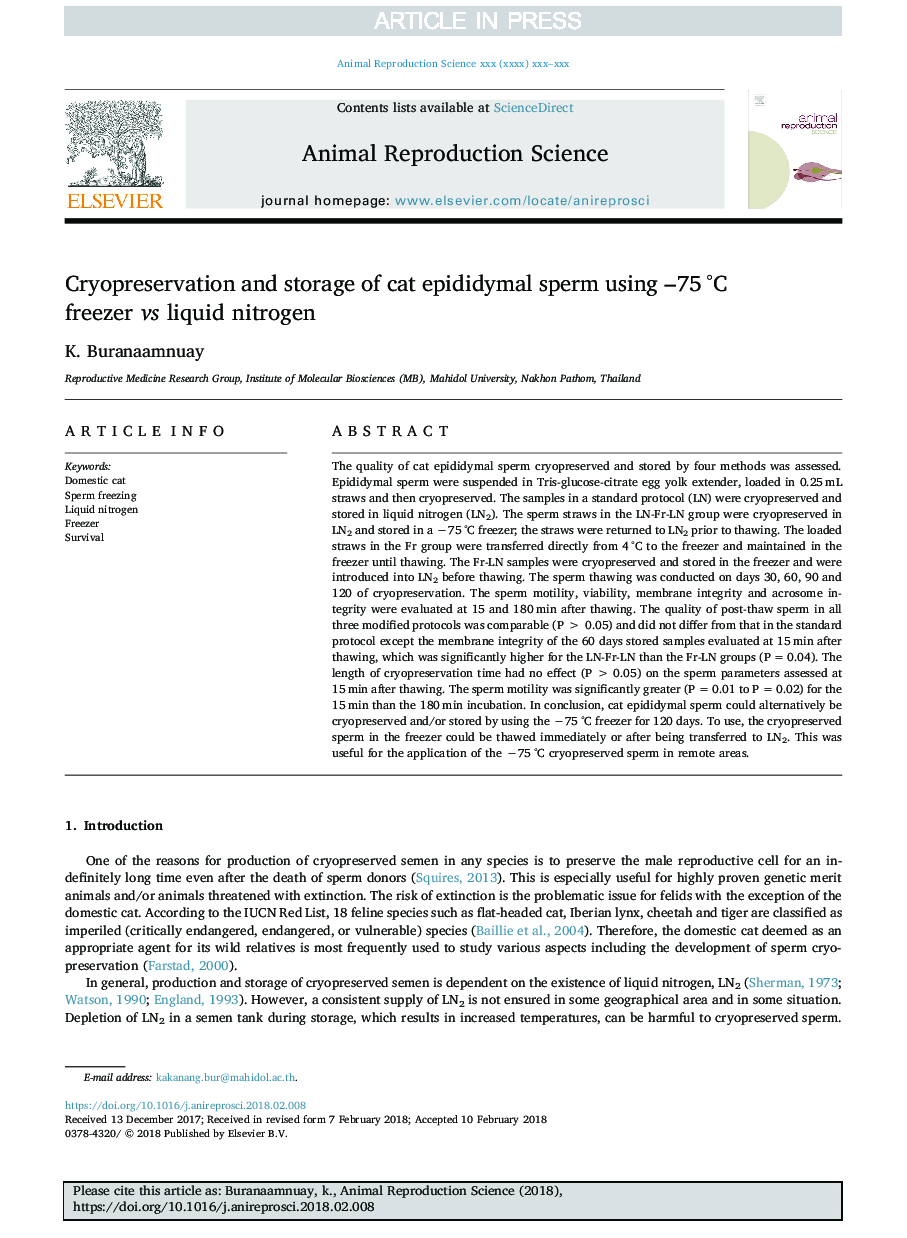| Article ID | Journal | Published Year | Pages | File Type |
|---|---|---|---|---|
| 8403944 | Animal Reproduction Science | 2018 | 8 Pages |
Abstract
The quality of cat epididymal sperm cryopreserved and stored by four methods was assessed. Epididymal sperm were suspended in Tris-glucose-citrate egg yolk extender, loaded in 0.25â¯mL straws and then cryopreserved. The samples in a standard protocol (LN) were cryopreserved and stored in liquid nitrogen (LN2). The sperm straws in the LN-Fr-LN group were cryopreserved in LN2 and stored in a â75â¯Â°C freezer; the straws were returned to LN2 prior to thawing. The loaded straws in the Fr group were transferred directly from 4â¯Â°C to the freezer and maintained in the freezer until thawing. The Fr-LN samples were cryopreserved and stored in the freezer and were introduced into LN2 before thawing. The sperm thawing was conducted on days 30, 60, 90 and 120 of cryopreservation. The sperm motility, viability, membrane integrity and acrosome integrity were evaluated at 15 and 180â¯min after thawing. The quality of post-thaw sperm in all three modified protocols was comparable (Pâ¯>â¯0.05) and did not differ from that in the standard protocol except the membrane integrity of the 60 days stored samples evaluated at 15â¯min after thawing, which was significantly higher for the LN-Fr-LN than the Fr-LN groups (Pâ¯=â¯0.04). The length of cryopreservation time had no effect (Pâ¯>â¯0.05) on the sperm parameters assessed at 15â¯min after thawing. The sperm motility was significantly greater (Pâ¯=â¯0.01 to Pâ¯=â¯0.02) for the 15â¯min than the 180â¯min incubation. In conclusion, cat epididymal sperm could alternatively be cryopreserved and/or stored by using the â75â¯Â°C freezer for 120 days. To use, the cryopreserved sperm in the freezer could be thawed immediately or after being transferred to LN2. This was useful for the application of the â75â¯Â°C cryopreserved sperm in remote areas.
Related Topics
Life Sciences
Agricultural and Biological Sciences
Animal Science and Zoology
Authors
K. Buranaamnuay,
